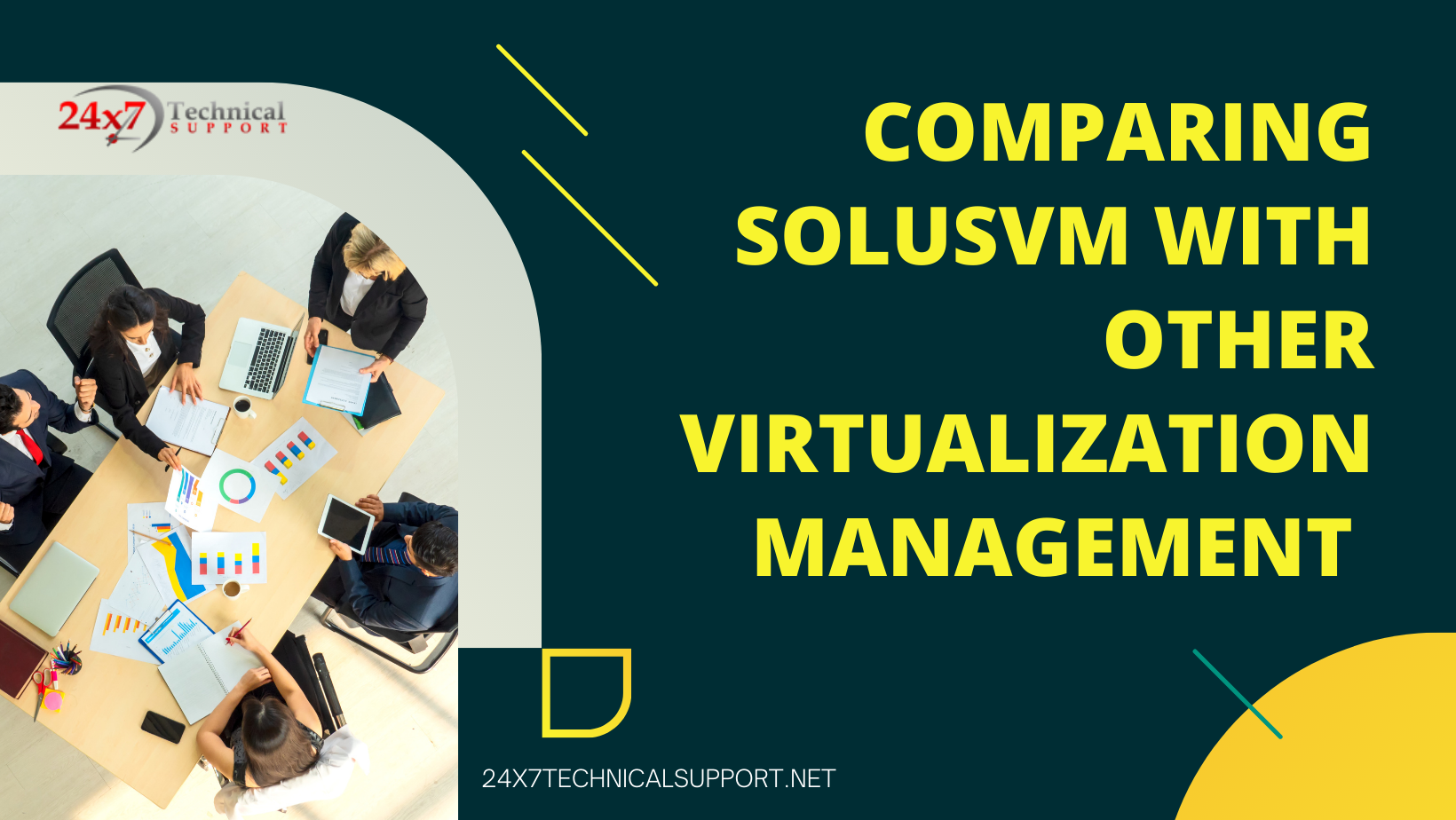
Introduction of SolusVM :
Virtualization management solutions have become indispensable tools for businesses and hosting providers, enabling them to efficiently manage and optimize their virtual infrastructures. In this blog, we will conduct a comprehensive comparison between SolusVM and other popular virtualization management platforms, helping you make an informed decision about the best solution for your specific needs. Let’s explore the key features, benefits, and differences to understand how these platforms stack up against each other.

1. SolusVM: The All-in-One Solution :
SolusVM stands out as a versatile, all-in-one virtualization management solution that supports multiple virtualization technologies, including OpenVZ, KVM, and Xen. Its user-friendly interface and intuitive controls make it an excellent choice for both beginners and experienced users. SolusVM’s robust feature set includes automated provisioning, VPS resource management, and advanced backup options, making it a reliable and scalable solution for businesses of all sizes.
2. Proxmox Virtual Environment: Emphasis on Open-Source
Proxmox VE is an open-source virtualization platform that combines virtualization with container-based technologies. It boasts a powerful web-based interface and supports KVM virtualization and LXC containers. Proxmox VE offers enterprise-level features, such as live migration, high availability clustering, and a comprehensive backup system. Businesses seeking an open-source solution with a strong community and regular updates may find Proxmox VE appealing.

3. VMware vSphere: Enterprise-Grade Virtualization
VMware vSphere is a leading enterprise-grade virtualization platform, highly regarded for its reliability, performance, and extensive features. Its powerful hypervisor, ESXi, provides top-notch virtual machine management and scalability. vSphere offers advanced features like Distributed Resource Scheduler (DRS), High Availability (HA), and Fault Tolerance (FT), making it an ideal choice for large-scale, mission-critical environments. However, vSphere’s licensing costs and hardware requirements may be a consideration for some businesses.
4. SolusVM : User-Friendly and Affordable
Virtualizor is known for its simplicity and cost-effectiveness. It supports multiple virtualization technologies, such as OpenVZ, KVM, and Xen, and offers a range of features, including automated backups, OS templates, and resource management. Virtualizor is favored by small to medium-sized businesses seeking a budget-friendly solution with a straightforward interface.
5. Microsoft Hyper-V: Integrating with Windows Environments
Microsoft Hyper-V is a virtualization platform that integrates seamlessly with Windows environments. As a Windows-native solution, it provides tight integration with Microsoft products and services. Hyper-V offers robust features like live migration, replication, and support for nested virtualization. Organizations invested in the Microsoft ecosystem may find Hyper-V a suitable choice due to its compatibility and ease of integration.
Conclusion:
Selecting the right virtualization management solution is essential for optimizing your infrastructure and enhancing operational efficiency. SolusVM stands as a reliable, feature-rich option for those seeking an all-in-one solution with support for multiple virtualization technologies. Proxmox VE appeals to businesses seeking an open-source platform with powerful features and a thriving community.
Virtualizor, on the other hand, caters to budget-conscious users with its user-friendly interface and affordable pricing.